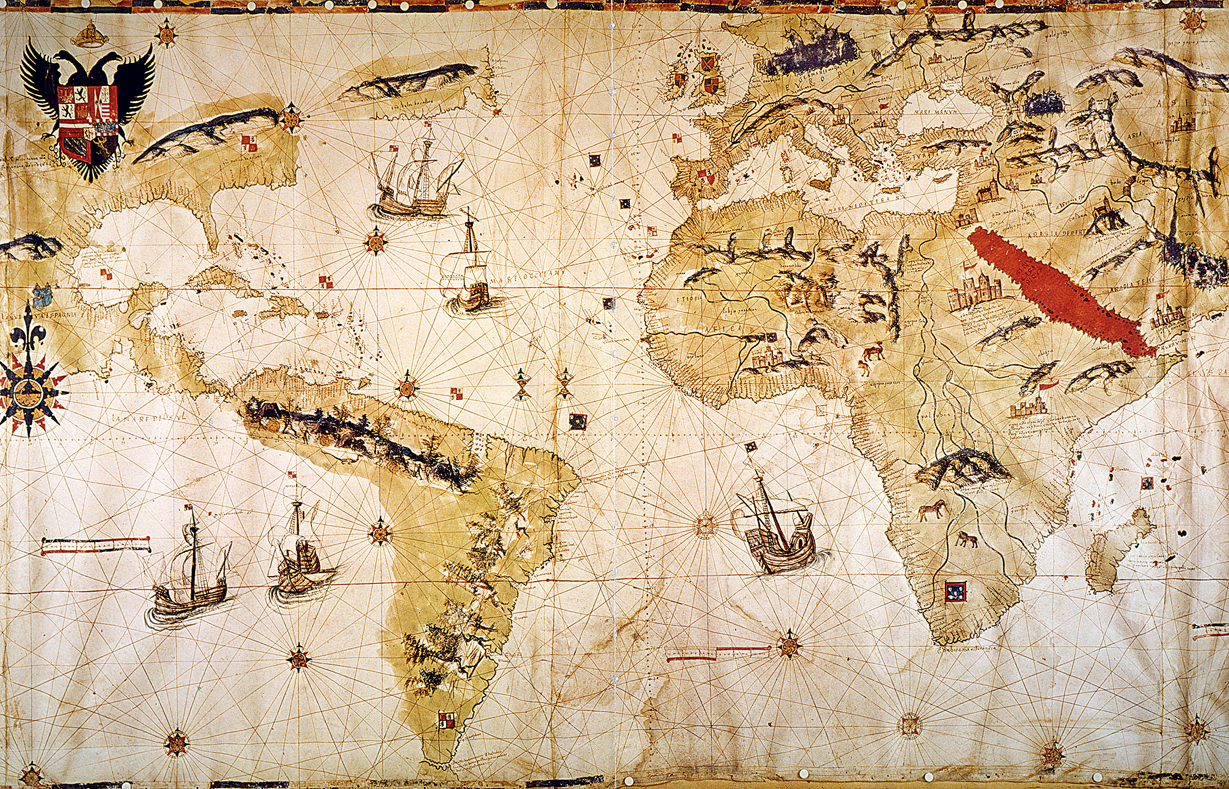A History of World Societies:
Printed Page 468
A History of World Societies Value
Edition: Printed Page 470
Spain “Discovers” the Pacific
The Florentine navigator Amerigo Vespucci (veh-
To settle competing claims to the Atlantic discoveries, Spain and Portugal turned to Pope Alexander VI. The resulting Treaty of Tordesillas (tawr-
The search for profits determined the direction of Spanish exploration and expansion in South America. Because its profits from Hispaniola and other Caribbean islands were insignificant compared to Portugal's enormous riches from the Asian spice trade, Spain renewed the search for a western passage to Asia. In 1519 Charles V of Spain commissioned Ferdinand Magellan (1480–
Terrible storms, disease, starvation, and violence haunted the expedition. Sailors on two of Magellan's five ships attempted mutiny on the South American coast; one ship was lost, and another ship deserted and returned to Spain before even traversing the strait. Magellan himself was killed in a skirmish in the Malay Archipelago. At this point, the expedition had enough survivors to man only two ships, and one of them was captured by the Portuguese. Finally, in 1522, one ship with only eighteen men returned to Spain, having traveled from the east by way of the Indian Ocean, the Cape of Good Hope, and the Atlantic. The voyage — the first to circumnavigate the globe — had taken close to three years.

Despite the losses, this voyage revolutionized Europeans' understanding of the world by demonstrating the vastness of the Pacific. The earth was clearly much larger than Ptolemy's map had shown. Magellan's expedition also forced Spain's rulers to rethink their plans for overseas commerce and territorial expansion. Although the voyage made a small profit in spices, the westward passage to the Indies was too long and dangerous for commercial purposes. Thus Spain soon abandoned the attempt to oust Portugal from the Eastern spice trade and concentrated on exploiting its New World territories.